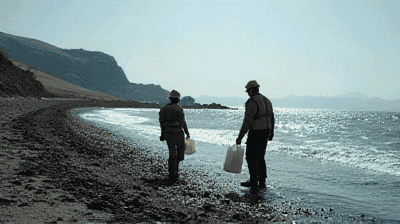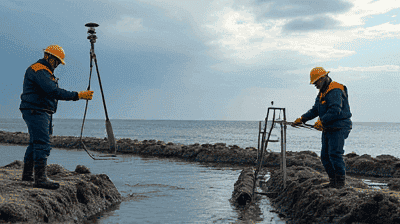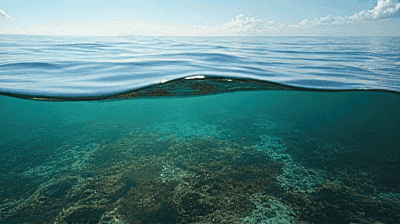
Oil spills are among the most significant environmental disasters that can occur in aquatic ecosystems, leading to dire consequences for marine life, coastal communities, and global ecosystems. The release of oil into marine and freshwater environments can devastate local wildlife, disrupt ecosystems, and have lasting effects on economies that depend on fishing and tourism. The cleanup of oil spills is a complex and challenging process that requires a combination of methods tailored to the type of oil, the environment affected, and the resources available.
Oil spills occur when liquid petroleum hydrocarbons are released into the environment, particularly marine areas, due to human activity. These spills can result from tanker accidents, drilling rig blowouts, pipeline failures, and other incidents. The consequences of oil spills are profound, affecting marine and terrestrial ecosystems, local economies, and public health.
The composition of oil plays a crucial role in how it interacts with the environment and which cleanup methods will be most effective. Oils can be classified into two main categories:
Light Crude Oil: This type of oil is more volatile and tends to evaporate quickly, making it easier to disperse in water.
Heavy Oil: Heavy oils, such as bunker fuel, are denser and less volatile. They tend to sink or form sticky tar mats, complicating the cleanup process.

Oil spills can have devastating short-term and long-term effects on the environment:
Toxicity to Marine Life: Oil can be toxic to aquatic organisms, including fish, birds, and mammals. Exposure can lead to a range of health issues, from cell damage to mortality.
Habitat Destruction: Coastal and marine habitats, including mangroves, coral reefs, and marshlands, can suffer extensive damage due to oil contamination.
Decreased Oxygen Levels: Oil spills can lead to reduced oxygen levels in the water, creating dead zones where marine life cannot survive.
Bioaccumulation: Oil components can accumulate in the tissues of marine organisms, affecting their reproduction and growth. This bioaccumulation can impact entire food webs.
Reproductive Issues: Long-term exposure to oil can cause reproductive and developmental issues in fish and other marine animals.
Economic Impact: Communities that depend on fishing, tourism, and recreation may experience long-lasting economic decline following an oil spill.
The cleanup process for oil spills involves several methods that can be used alone or in combination, depending on the circumstances of the spill. Below are the primary methods of oil spill response.
Containment is the first step in managing an oil spill to prevent its spread. Various containment methods include:
Booms: These floating barriers are deployed around the spill site to contain and confine the oil, minimizing its spread. Booms can be made from various materials, including plastic and inflatable devices.
Sorbent Materials: Sorbents are materials that can absorb or repel liquids. These can be used to soak up oil from the surface of the water, effectively trapping it for removal.
Skimming is a mechanical method used to remove oil from the surface of the water. Skimmers are specialized boats or devices equipped with pumps that collect oil while leaving water behind. Various skimming methods include:
Weir Skimmers: These devices operate by allowing oil to flow over a weir while water is discharged beneath.
Belt Skimmers: These have a conveyor belt that runs through the water and collects oil for removal.
Skimming can be effective in calm waters with thicker oil, although its efficiency can decrease in rough seas or with oil that has broken apart due to weathering.
Dispersal involves the application of chemical agents, known as dispersants, that break down oil into smaller droplets, allowing it to mix more easily with water. Dispersants can enhance the natural biodegradation of oil, but their use is controversial due to potential toxicity to marine life. Key points include:
Timing: Dispersants work best when applied soon after a spill occurs, before the oil has weathered and become more viscous.
Monitoring: Continuous monitoring of dispersant effectiveness and marine life health is necessary to assess the impact of this method.
Bioremediation is an environmentally friendly method that uses microorganisms to break down oil components into less harmful substances. This method can be particularly effective in beach environments and marshes. Key aspects include:
Natural Microbial Populations: In some cases, naturally occurring bacteria can degrade oil, leading to self-cleaning of contaminated areas.
Nutrient Addition: Adding nutrients, such as nitrogen and phosphorus, can enhance the growth of these microorganisms and accelerate the breakdown of oil.
Chemical oxidation is another method employed in oil spill cleanup. It involves the application of chemical agents that react with the oil to degrade it into less harmful substances. This method may be suitable for certain types of spills, particularly in confined areas.
In some cases, particularly on beaches or shorelines, manual cleanup may be necessary. This involves workers collecting oil-soaked materials, such as sand, vegetation, and debris, and transporting them for disposal. Manual cleanup can be labor-intensive and time-consuming, but it is crucial in minimizing environmental damage.
Thermal recovery involves using heat to reduce the viscosity of heavy oils, making them easier to remove. Mechanical recovery uses equipment to physically remove contaminated materials from affected areas. This can include vacuum trucks, shovels, and other heavy equipment to extract oil and impacted materials.

Advancements in technology have enhanced our ability to respond to oil spills effectively. Some key technological innovations include:
Remote sensing technologies, such as satellite imaging and aerial surveillance, allow responders to track the spread of oil spills in real time. This data can inform decision-making regarding containment and cleanup efforts.
AUVs equipped with sensors can be deployed to assess underwater oil plumes and provide information on the extent of contamination, helping responders understand the full scope of a spill.
Innovative bioremediation technologies are being developed to improve the breakdown of oil in contaminated environments. For example, engineered bacteria can be designed to target specific oil components and degrade them more efficiently.
The cleanup of oil spills presents numerous challenges:
Weather conditions, such as wind and waves, can complicate cleanup efforts. Rough seas can make skimming and containment more difficult, while heavy rain can lead to oil dispersal.
The characteristics of the oil involved in a spill determine which cleanup methods will be most effective. Light oils may evaporate quickly, while heavy oils may form tar balls that are harder to remove.
Time is crucial in spill response. The longer the oil is allowed to remain in the environment, the more it can spread and the greater the potential for long-term damage.
The use of dispersants and other chemicals raises concerns about their potential toxicity to marine life. Ecosystem health must always be a priority when selecting cleanup methods.

The Exxon Valdez oil spill occurred when an oil tanker struck a reef in Prince William Sound, Alaska, releasing approximately 11 million gallons of crude oil. The cleanup effort involved:
Containment and Skimming: Initial efforts focused on containment booms and skimmers to reduce the spread of oil.
Bioremediation: Nutrients were added to promote the growth of bacteria that could degrade the oil.
Manual Cleanup: Beach cleanup crews worked tirelessly to remove oil from contaminated shores.
Despite intensive cleanup efforts, the long-term impacts of the spill persisted for decades, demonstrating the challenges and limitations of oil spill response.
The Deepwater Horizon oil spill, one of the largest marine oil spills in history, released an estimated 210 million gallons of oil into the Gulf of Mexico. The cleanup response included:
Containment Booms and Skimmers: Immediate response efforts involved deploying containment booms and skimmers to capture the oil.
Dispersants: Large amounts of chemical dispersants were applied both on the surface and underwater to break down the oil.
Burning: Controlled burns were sometimes conducted to remove oil from the surface of the water.
Long-term Monitoring and Restoration: The spill had profound ecological impacts, and long-term monitoring and restoration efforts continue.
The complexity and scale of the Deepwater Horizon spill illustrated the need for improved response strategies and technologies, as well as greater regulatory oversight in the oil industry.
Governments and agencies must enact and enforce stricter regulations on oil transportation, drilling, and storage to minimize the risk of spills. This includes regular inspections, adherence to safety protocols, and penalties for non-compliance.
Continued investment in research and development for safer drilling techniques, improved containment strategies, and innovative cleanup methods holds the key to preventing spills and minimizing impacts.
Communities must develop response plans and engage in training exercises to ensure preparedness for potential oil spills. Collaborative planning fosters resilience and enables swift action in the event of a disaster.
Transitioning to renewable energy sources can reduce the reliance on oil and decrease the occurrence of spills. Sustainable practices in energy production can lead to a healthier planet.
Oil spills pose significant threats to our environment, marine life, and coastal communities. Understanding the methods used to clean up these disasters and the challenges faced in the process is essential for improving future responses. While a combination of containment, skimming, bioremediation, and innovative technologies offers effective strategies, the ecological consequences of spills highlight the urgent need for prevention, regulation, and preparedness.
By prioritizing policies that protect our waters, investing in research and technology, and fostering community engagement, we can work together to minimize the risk of oil spills and their repercussions on our planet. Sustainable practices and alternative energy sources will ultimately lead to a cleaner and safer environment for future generations.